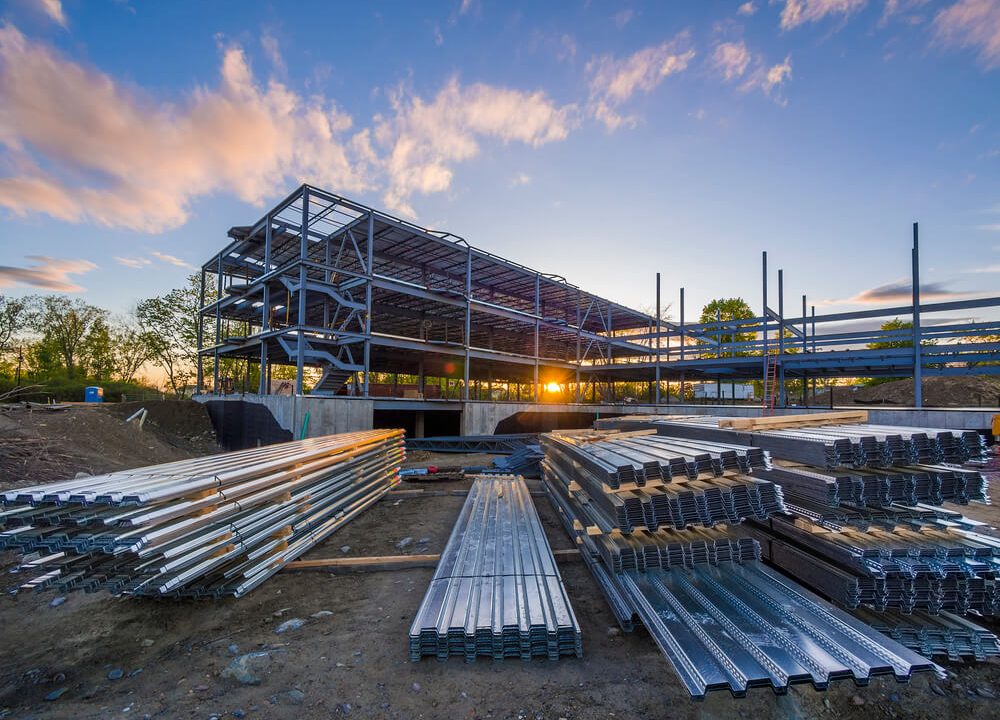
Since humans began living in society, engineering has been transforming their daily lives. Over time, techniques have improved, and the size and complexity of structures have increased.
The Egyptian Pyramids, a hospital, a simple residence, and all other types of constructions utilize technologies developed by civil engineering. To achieve positive results in the consumer market, a business owner must stay abreast of the latest developments in this field.
THE prestressed concrete It's one of the most modern methodologies and is widely used today. But do you know what it is or how it works?
Today's post answers these and other questions. Continue reading and learn more about steel in prestressed concrete!
Concrete is a material that performs very well when subjected to compressive stresses. However, its tensile strength is quite low, reaching 10% of the previous parameter value.
To solve this problem, the following are used: steel bars, in order to support such loading. However, in some cases, the stresses exceed the resistance limits of reinforced concrete, and another construction option is necessary.
Prestressing is a technology that induces, in a structure, a previous state of tension by using active reinforcement with the aim of increasing the resistance of the concrete part.
Prestressed concrete is divided into three types:
A situation in which the reinforcement is pre-stretched before the concrete is poured. It is also widely used in the concreting process for prefabricated parts.
Cases in which the prestressing force is applied after the concrete has cured. At this point, hydraulic jacks are used to subject the active reinforcement to previously calculated stress values.
In this case, prestressing is applied to the part after it has cured, without any adhesion between the active reinforcement and the concrete. Thus, the active reinforcement is placed in ducts, consisting of metal and plastic sheaths, and injected with grease to prevent corrosion.
In short, when it comes to prestressed concrete, a load is applied to the piece, either before or after its production, to combat the demands that are to come on its structure.
In 1824, Portland cement was developed in England, and concrete elements began to appear in our society. As time passed, architectural designs became more ambitious, and reinforced concrete could no longer keep up with their solutions.
Loads and spans increased, requiring the creation of a new methodology to solve this problem. After several attempts and experiments around the world, in 1928, in France, satisfactory and reliable results were obtained in their work on prestressed concrete.
In Brazil, in 1948, the Galeão Bridge in Rio de Janeiro was the first project to use prestressed concrete. In this case, all materials were imported from abroad, as this methodology was still new in our country.
Some professionals confuse the use of these two construction methodologies, so to avoid making the same mistake, see below what their differences are:
Reinforced concrete structures are widely used in our society. Homes, hospitals, schools, and all small and medium-sized structures use this construction method. However, as loads, spans, and structural design increase, it becomes necessary to adopt something more modern and resistant.
As mentioned earlier, prestressed concrete was created to increase the strength of concrete elements in a structure. As a result, architects and engineers can create bolder and more challenging projects. Today, prestressed steel concrete is used to build:
Prestressed concrete also offers some benefits to a project. Check out some of them in the following topics.
The appearance of cracks is inevitable in concrete. However, as long as they comply with regulatory limits, the stability of the structure is not compromised.
When using prestressed concrete, the cracking process is reduced to a minimum, since the applied stresses have the opposite direction to the stresses caused by the structure's own weight.
As there are no more cracks, the corrosion process is avoided, giving the concrete piece more durability.
The design strengths used in prestressed concrete are two to three times greater than those used in reinforced concrete. Furthermore, prestressing steels have strengths three to five times greater than those used in this other case.
However, the price difference between inputs in these two situations does not keep pace with this growth. The financial percentage increases are much lower than the strength increases resulting from the use of prestressing.
In other words, with the use of prestressed concrete, it is possible to increase the resistance of a structure without having to spend large amounts of money.
Whether you're walking around your city or watching documentaries, you've probably come across structures that challenge the human mind, right?
Our cities are increasingly modern, and architectural projects demand bold and creative structures. Only prestressed concrete can meet these demands without neglecting financial, aesthetic, and execution considerations.
Therefore, when it is necessary to build something with large spans and loads, only prestressed concrete can be used.
Civil engineering has several construction methodologies that must be applied wisely. Prestressed concrete was developed to serve in cases where reinforced concrete is insufficient, and as such, it has been gaining increasing market share.
So, have you discovered what steel is and what the advantages of prestressed concrete are? Follow us on our social media (Facebook , LinkedIn and Youtube) and stay up to date with the latest developments in the construction industry.